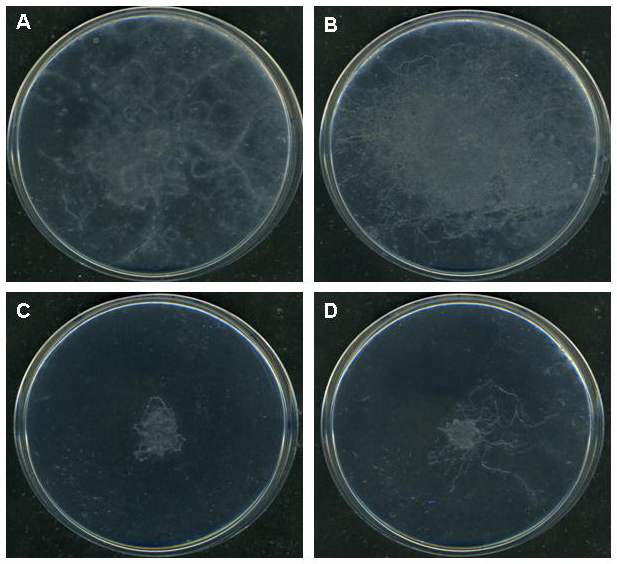C. elegans, as most animals, changes its behavior depending on the environment. We are characterizing mutants deficient in neurexin (nrx-1) and neuroligin (nlg-1) genes. These proteins are cell adhesion molecules present in excitatory and inhibitory synapses and they are required for correct neuron network function (Sudhof 2008). Previously we have shown that nlg-1 deficient mutants are defective in detecting osmotic strength (Calahorro et al. in press). Here we show a simple qualitative method to identify impaired roaming motion.
Description of the method:
1) Pick twenty L4 larval stage animals of each genotype from a fresh NGM plate containing OP50 E. coli and put them in the middle of a 9 cm plate containing 8 ml of agar medium (2% agar, 0,25% Tween20, 10 mM HEPES pH7,2) without bacteria.
2) Incubate the plate from 5 to 7 days at 20°C.
3) The fingerprinting of the worms is recognized by sight as a consequence of their roaming. A representative example is shown in Figure 1.
Figures

References
Calahorro C, Alejandre E, and Ruiz-Rubio M. (in press). Osmotic avoidance in Caenorhabditis elegans: synaptic function of two genes, orthologues of human NRXN1 and NLGN1, as candidates for autism. Journal of Visualized Experiments. http://www.jove.com/index/Details.stp?ID=1616
Sudhof TC. (2008). Neuroligins and neurexins link synaptic function to cognitive disease. Nature 455, 903-9011. 




